High-speed life dictates certain rules by which cars move on roads, but traffic accidents have become almost a common occurrence in modern life.
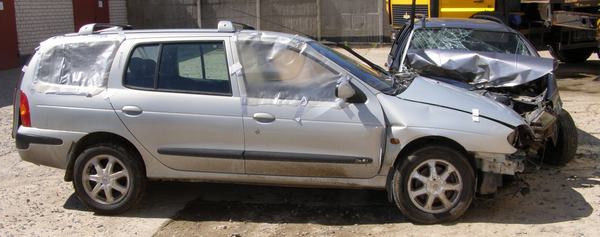 With a serious accident, it is important to find out all the circumstances that caused the accident. Routine procedures include examining the scene, interviewing witnesses and various diagnostic measures.
With a serious accident, it is important to find out all the circumstances that caused the accident. Routine procedures include examining the scene, interviewing witnesses and various diagnostic measures.
The main type of research is automotive technical expertise in road accidents. It is carried out when it is impossible to find out the details of the incident or to clarify them.
Examination includes several types of procedures. Each of them is conducted on its own grounds and explores different aspects of an accident.
Case study
During the examination, the parameters of movement during an accident can be calculated, as well as an analysis of the actions of the driver.
The specialist who organizes the study must answer many questions, so the examination of the circumstances is a rather time-consuming process that requires experience and knowledge.
Only an expert is able to reconstruct the picture of events that occurred both during an accident and preceded the occurrence dangerous situation.
Often with the help of this study, the guilt or innocence of the participants in the incident is established. Auto technical expertise in road accidents and its results become the only evidence in court if it is impossible to establish the true state of affairs during the accident. It allows you to set the following:
- Vehicle speed at the time of the accident. It is determined by the braking distance. It takes into account its length and the time it took to completely stop the machine.
- Remoteness of cars (car and pedestrian) from each other and from other objects immediately before the accident. Measures distances.
- The ability to prevent accidents according to technical indicators.
- The moment of occurrence of the accident conditions is determined. All circumstances that created a dangerous situation are taken into account. Auto technical expertise in road accidents involves design schemes, moment modeling and experiment.
- Possible and real actions of the driver are established, which influenced the outcome of the road traffic situation.
- Danger zone conditions. All circumstances independent of the participants in the incident are investigated, including the condition of the road surface and violations of the rules for repair work on the roadway.
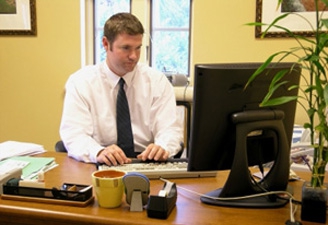
This type of diagnostic measures is interconnected with other types of research in the field of road accidents, since the automotive technical expertise (examination of the circumstances of an accident) is carried out only by an integrated method.
The study of the technical condition of the car
Examination is an integral part of the main study of circumstances and is carried out taking into account the characteristics of the vehicle. The malfunctions that existed before the accident and their impact on the road situation, as well as the main characteristics of the vehicle are clarified.
Diagnostics of the technical condition involves inspection of the machine components, as well as the conformity of the declared parameters specified in the documents.
- Examination of the engine, gearbox, instruments and body. Inspection for damage and determining the time of occurrence.
- If the car has a manufacturing defect or damage occurred during operation, the expert finds out if this caused the accident.
- Damage resulting from a collision (collision) is also subject to such research as expert analysis of accidents. Auto technical examinations in these cases reveal which object collided with, as well as typical malfunctions.
- The specialist must determine extent of damage to the occurrence of the incident.
Traological examination
Examination of the tracks is carried out in order to restore the events of the moment of the accident - the movement of the car, its location in relation to other objects before the accident and after.
Since this study does not involve going to the scene of an accident, an autotechnical traological examination is carried out based on photographs of the scene of the accident and other materials that must be provided.
The specialist does not have the right to independently collect documents, so the customer must send the base for research in full, as well as identify specific issues with accurate information on the incident.
Engineering psychological research
During the examination, an assessment is made of the psychological balance of the driver, both general and expected, during an accident. The expert carefully studies this component due to the fact that the results can significantly affect the outcome of the judicial investigation.
In the event that the driver could prevent the accident by responding in time to an obstacle or a skid, the court can convict him of an accident. When considering a criminal case, a guilty verdict is handed down, a decision in a civil suit involves the deprivation of a driver’s license.
The exceptional circumstances of the accident, which could not be prevented, allow the driver to be found not guilty of the incident. The court takes into account the presence of victims and other circumstances.
Events and parameters for research
Carrying out an automotive technical examination in an accident is requested by the customer - the investigator, the court, individuals or legal entities. To carry out diagnostic measures, independent experts are involved who can objectively assess the situation. Based on the results, an expert opinion is made, which can then be used in court.
The study is carried out in the following cases:
- Disputes about the guilt of one of the parties to the accident or claims for unlawful accusations of a traffic accident.
- Refinement of the accident scheme.
- Assessment of damage caused to a vehicle (for an insurance company).
- Pre-sale expertise.
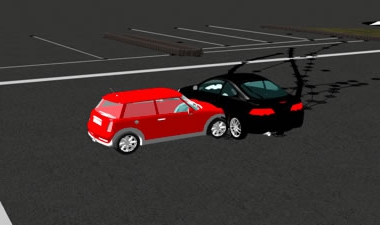
In order to get a clearer picture of an accident, experts examine the following parameters:
- Visibility.
- Visibility.
- Road conditions and furnishings.
- Interference to the movement.
- Hazardous areas and emergency conditions.
By examining each of the points, a specialist can create a three-dimensional model of the accident.
CASCO and CTP
Auto technical examination after an accident is carried out in most cases for the insurance company. According to generally accepted rules, the insurer inspects the car for damage and, if there is an insured event, pays a certain amount. Practice shows that companies often underestimate the amount of money that a car owner will receive.
In this case, the recipient has the opportunity to apply to the court for the appointment of an independent examination of the technical condition of the car.
There is another, shorter way to collect insurance money. Experienced lawyers advise you to assess damage in advance and notify the insurer of the place and time of the procedure. Then, the car owner with all the documents, including the expert’s opinion, turns to the insurance company to receive payments.
If there are victims in an accident
Victims or relatives go to court to recover damage to their health. In this case, autotechnical studies and forensic examinations should be carried out, which will not only determine the severity of the harm caused to health, but also make a conclusion about the actions of the driver in an accident.
The document does not determine whether the driver had a direct intent to commit a traffic crime and whether he was guilty. The results can only indicate circumstances that subsequently affect the outcome of the case.
Who does the research
During a judicial investigation, independent examination may be ordered by investigators and judges, as noted earlier. If the car owner contacts the specialist on his own, he should clarify whether the expert (or expert company) is registered with the Ministry of Justice and what identifier is assigned to him. There must be a license to conduct research, otherwise the conclusion will be invalid.
The service center, in which the car is serviced and repaired after an accident, being an interested person, cannot perform automotive research. Examination is also not carried out by individuals who do not own the appropriate skills and tools.
The final document should indicate all the circumstances (explicit and assumed by the calculation formulas) that caused the incident. A conclusion with incomplete information can significantly worsen the situation of the car owner and affect the outcome of the case. In practice, quite often the appointment of a re-examination is carried out, which is already being carried out by another specialist for the selection of the defendant / accused.
Questions and background
There are quite certain questions of automotive technical expertise after an accident, which a specialist must answer in the research process. There is also a list of the necessary data provided to the expert for the job.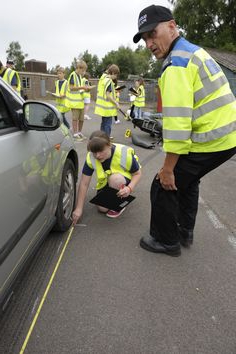
Basic data:
- Make and model of the car (TS), its condition, number of passengers.
- Type of road surface (dry asphalt, ice, dirt, etc.).
- Braking distance - presence, length, time of a complete stop.
- Accident point.
- The speed of the car (or several vehicles) before the accident.
- When hitting a pedestrian - the nature of the collision with which part of the car it was perfect. Visibility and viewing angle for road accident participants.
- The collision of two or more vehicles - the angle at which cars moved. How many degrees did the vehicle shift after the incident.
- The actions of the driver at the time of the accident.
- Measurement of the distance at which the objects were before the incident and during it.
- Accident during overtaking - flow rate and injured vehicles, the number of cars in the lane, the actions of drivers.
Forensic auto-technical examination of an accident should provide answers to the following basic questions:
- Estimated vehicle speed based on appropriate braking distance measurements
- The distance at which the objects were from each other at the beginning. If was perfect pedestrian collision, who crossed the road - how far the car was at the moment when the pedestrian began to cross the roadway. In a collision at a crossroads, how far TC1 was from TC2, which begins to enter a road intersection.
- Could the driver prevent an accident by timely braking or other technically possible actions? Was it possible to avoid an accident if the driver responded in time to a dangerous situation?
- Which actions of the participants in the accident comply with the rules of the road, and which do not.
- When overtaking - calculation of the safe distance between cars for overtaking in specified conditions
Law
An automotive technical examination in an accident, the issues of which are fully resolved, will be indisputable evidence in the framework of a judicial investigation.
The procedure for appointing a special study is enshrined in the Code of Administrative Offenses of the Russian Federation, Art. 26.4. It says that an expert conducting diagnostic measures is warned of responsibility for giving a deliberately false conclusion.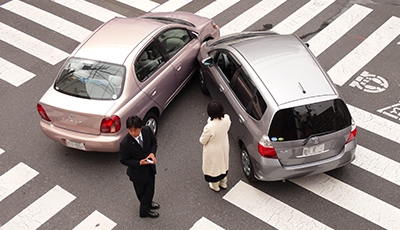
Therefore, when appointing an examination, the name of the company or full name should be indicated. a specialist who will do this so that if necessary there is someone to attract.
Before sending materials for research, the court is obliged to familiarize participants in the process with them. They have the right to supplement the questions indicated in the direction to which the automotive technical expertise in an accident is required to give answers.
The conclusion in court is of relative importance if the examination was carried out on the initiative of the parties. Designated by the court itself, it should be accepted for study. In the event that the court does not agree with the conclusion, the position should be motivated.
Example
What questions can be posed to an expert if they do not go beyond his competence (on the example of a side collision of a vehicle):
- What points traffic rules drivers should be guided (list of articles) of the vehicle?
- Establish the relative position of the cars at the time of the collision and relative to the roadway.
- Time and speed of the vehicle TC1 (leaving the adjacent territory) until a dangerous moment occurs.
- Was the TC1 driver able to prevent a collision by emergency braking if his speed was acceptable for driving in a residential area?
- Determine the speed of TC2 before braking, examining the length of the braking distance and the distance that was moved at the time of the collision of TC1.
- See p. 4 for the TC2 driver and driving at a permissible speed on the roadway
For mathematical calculations of the braking distance, distance and speed, there are complex formulas in which information from the documents provided to the expert is taken as initial data.
Damage assessment
On the basis of the conclusion given by the automotive technical examination of the circumstances of the accident, not only the guilt of one of the parties in the accident is determined, but also the damage caused to the vehicle is calculated.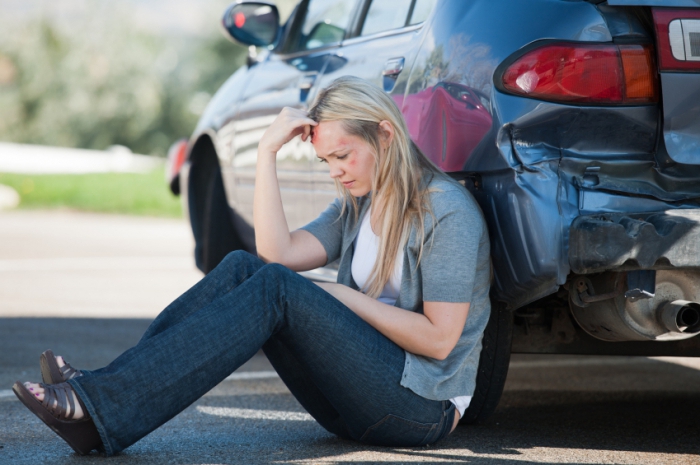
The degree of damage caused to the car is determined by completely different experts. The study may use the conclusion of an examination of the circumstances. First of all, an independent assessment is necessary to compile a list of injuries sustained during an accident.
Based on the automotive research, specialists can determine exactly which malfunctions arose as a result of the accident. In addition, the task of the expert bureau is to calculate the cost of damaged parts and restoration of the vehicle at maximum market prices.
This study is by no means carried out as part of a process such as automotive technical expertise after an accident. Damage assessment is not within the competence of specialists in the diagnosis of circumstances.
Dates of Examinations
The time for which this or that study in an accident should be completed is not regulated by law. However, the companies providing such services themselves are interested in quickly and efficiently conduct an examination.
In practice, auto-technical diagnostics of the accident is carried out from 14 to 30 days, depending on the workload of the specialist. Some expert bureaus suggest that damage after an accident be assessed for a period of 1 to 3 days.
The cost of services depends on the brand of the vehicle (passenger or heavy), as well as on the amount of damage that the assessment or automotive technical examination revealed.
Calculation of damage during an accident should not be carried out in the bureaus, which are partners of insurance companies. As a rule, such companies strive to provide an opinion that is not true and which allows several times to reduce the insurance amount for the driver.









Thank.
Thank.